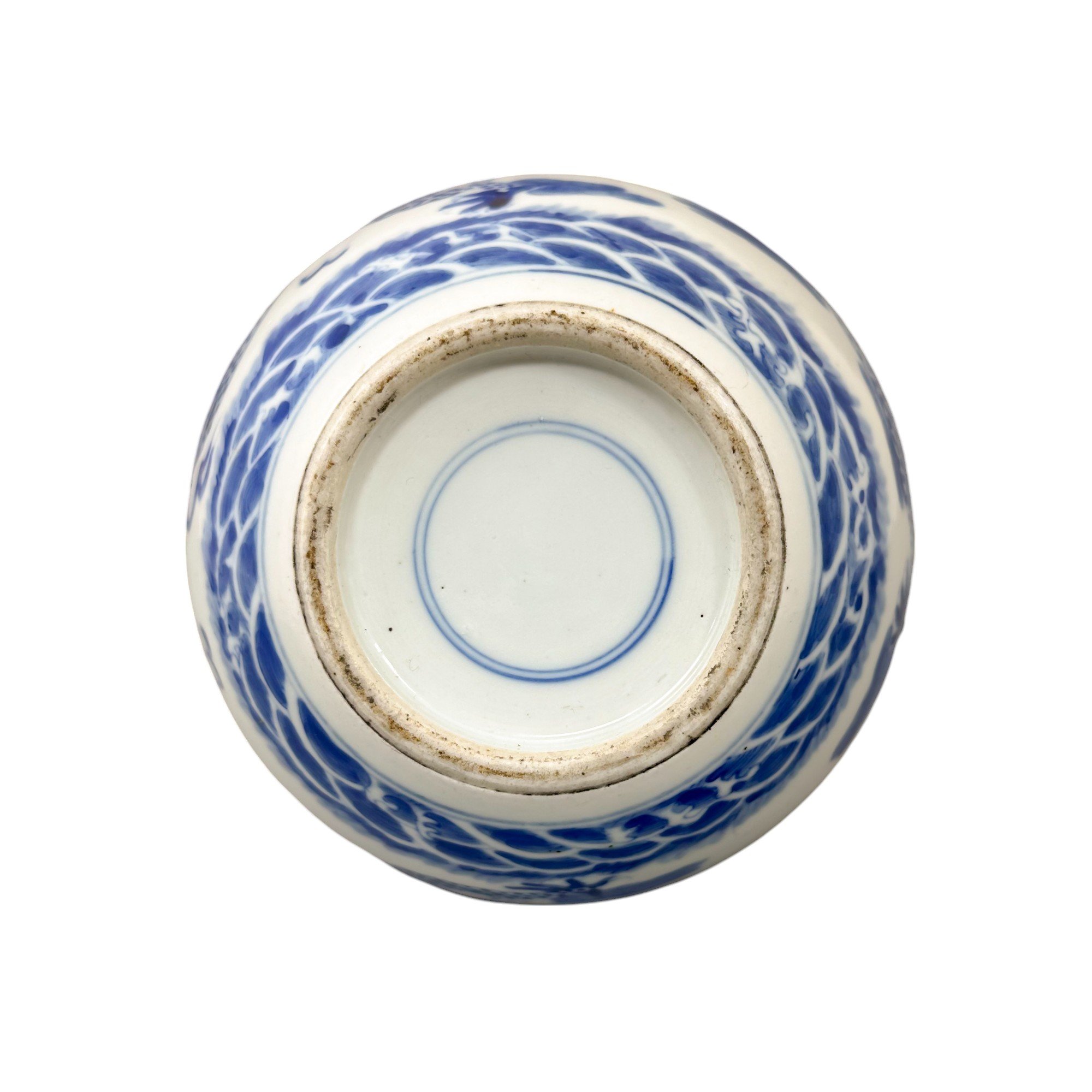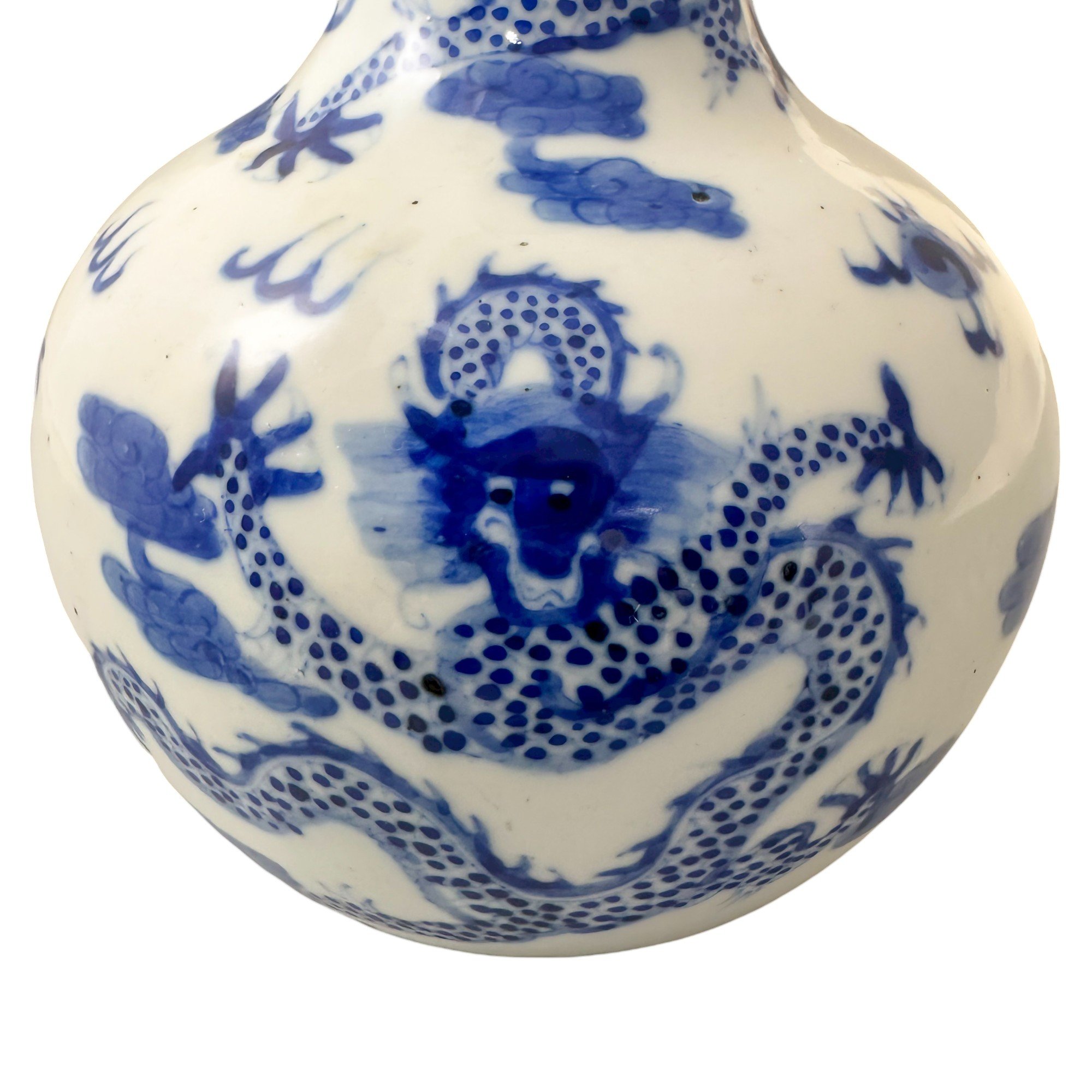 Image 1 of 8
Image 1 of 8

 Image 2 of 8
Image 2 of 8

 Image 3 of 8
Image 3 of 8

 Image 4 of 8
Image 4 of 8

 Image 5 of 8
Image 5 of 8

 Image 6 of 8
Image 6 of 8

 Image 7 of 8
Image 7 of 8

 Image 8 of 8
Image 8 of 8









Chinese 19th Century sang de boeuf bottle Tianqiuping vase; flambe glazed porcelain
Chinese flambé glazed porcelain sang de boeuf bottle vase with a mottled glaze, and café au lait rim. Of Tianqiuping form resembling a planet, this vase has a broad mouth, a straight neck, a round body, and a footless, flat base that is slightly countersunk.
Made in China, second half 19th century, Tongzhi/ Guangxu period, Qing dynasty.
1230 g
22.5 cm tall
5 cm diameter on top
15 cm across at widest point
7.5 cm across the base
Excellent antique condition. Glazing around the base is uneven.
Chinese flambé glazed porcelain sang de boeuf bottle vase with a mottled glaze, and café au lait rim. Of Tianqiuping form resembling a planet, this vase has a broad mouth, a straight neck, a round body, and a footless, flat base that is slightly countersunk.
Made in China, second half 19th century, Tongzhi/ Guangxu period, Qing dynasty.
1230 g
22.5 cm tall
5 cm diameter on top
15 cm across at widest point
7.5 cm across the base
Excellent antique condition. Glazing around the base is uneven.
Chinese flambé glazed porcelain sang de boeuf bottle vase with a mottled glaze, and café au lait rim. Of Tianqiuping form resembling a planet, this vase has a broad mouth, a straight neck, a round body, and a footless, flat base that is slightly countersunk.
Made in China, second half 19th century, Tongzhi/ Guangxu period, Qing dynasty.
1230 g
22.5 cm tall
5 cm diameter on top
15 cm across at widest point
7.5 cm across the base
Excellent antique condition. Glazing around the base is uneven.
Sang de boeuf refers to the colour which translates to French for 'ox blood', a colour created by oxidising iron & copper.
Sang de boeuf was one of a number of new flambé glazes, marked by unpredictable but highly decorative and varying effects. First developed in the Jingdezhen porcelain kilns during the Kangxi reign (1662-1722).
The term tianqiuping, sometimes translated as 'celestial sphere vase', derives from the vase's form, which is characterized by a generously proportioned globular body surmounted by a tall cylindrical neck. During the Qianlong period (1736-96), when tianqiuping gained prominence, these vessels were produced in varying sizes.


































